Alvis Saracen
The FV603 Saracen is a six-wheeled armoured personnel carrier built by Alvis and used by the British Army. It became a recognisable vehicle as a result of its part in the policing of Northern Ireland as well as for its role in enforcing apartheid in South Africa.[1] It is still in use in secondary roles in some countries.
| Alvis Saracen Mk 1 | |
|---|---|
 FV 603 Saracen in Yad la-Shiryon museum, Latrun. | |
| Type | Armoured personnel carrier |
| Place of origin | United Kingdom |
| Service history | |
| In service | 1952–present |
| Used by | See Operators |
| Wars | Aden Emergency Malayan Emergency The Troubles Nigerian civil war South African Border War Soweto uprising Sri Lankan civil war Black September Yom Kippur war Lebanese Civil War Invasion of Kuwait |
| Production history | |
| Manufacturer | Alvis |
| Produced | 1952–1976 |
| Specifications | |
| Mass | 11.0 t |
| Length | 4.8 m |
| Width | 2.54 m |
| Height | 2.46 m |
| Crew | 2 + up to 9 troops |
| Armour | 16 mm Rolled homogeneous armour (RHA) |
Main armament | Browning M1919 machine gun or L37 GPMG |
Secondary armament | Bren LMG, 6–12 smoke grenade launchers |
| Engine | Rolls-Royce B80 Mk 3A or Mk 6A, 8 cyl Inlet over Exhaust petrol 160 hp |
| Power/weight | 14.5 hp/tonne |
| Suspension | 6x6 wheel, independent torsion bars |
Operational range | 400 km |
| Maximum speed | 72 km/h (off-road 32 km/h) |
History
The FV603 Saracen was the armoured personnel carrier of Alvis's FV600 series. Besides the driver and commander, a squad of eight soldiers plus a troop commander could be carried. Most models carried a small turret on the roof, carrying a Browning .30 machine gun. A .303 Bren gun could be mounted on an anti-aircraft ring-mount accessed through a roof hatch and there were ports on the sides through which troops could fire. Although removed from active service, it saw extensive use into the 1980s in Northern Ireland and was a familiar sight, nicknamed 'sixers', during "The Troubles". At times, they appeared on the streets of Hull, a less-hostile atmosphere for driver training in a city of similar appearance to Belfast, and only a few miles from the Army School of Mechanical Transport.
As a member of the FV 600 series, it shared a similar chassis to the FV601 Saladin armoured car, the Salamander airfield crash truck and the Stalwart high mobility load carrier. The punt chassis, suspension and H-drive drivetrain remained similar, but the engine, transmission and braking systems varied significantly.
The Saracen was in turn used as an armoured personnel carrier, armoured command vehicle and ambulance. The FV 603 model saw many variants in detail, including radio or command fitments and specialist equipment for artillery or signals use.
The Saracen series also includes:
- FV 604 armoured command vehicle (ACV): with extra radio equipment and distinctive "penthouse" roof extensions to support.
- FV 610 armoured command post Royal Artillery (ACP): no turret and higher roof to the armoured compartment allowed headroom for the battery command post officer and technical assistants of the Royal Artillery to sit at a fitted table and use their plotting instruments and ALS 21 in front of the command post officer. There were also fittings for a canvas penthouse to the rear and sides. A small generator was sometimes carried on a front wing.
- FV 606 / FV 611 armoured ambulance.
Saracen was produced before Saladin because of the urgent need for a personnel carrier to serve in the Malayan Emergency, entering production in 1952.
The Saracen was produced both with and without turrets fitted. They are popular with collectors due to their prices being as low as $20,000 in Australia and $11,000 in the Czech Republic.
Combat history
- Aden Emergency
- Malayan Emergency
- Nigerian civil war
- Sri Lankan civil war
- The Troubles
- Yom Kippur war
- Soweto uprising
- Lebanese Civil War
Operators
Military operators

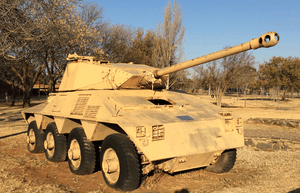
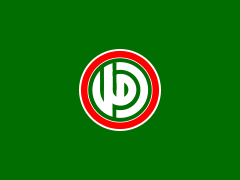
.svg.png)
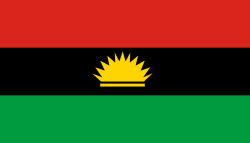
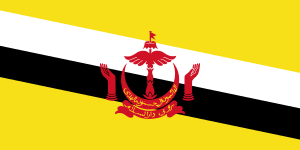

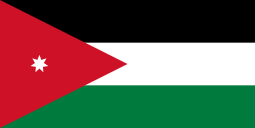
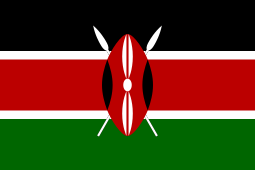
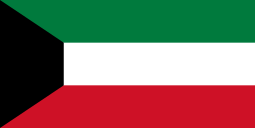

.svg.png)
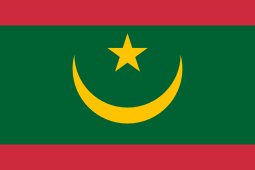


.svg.png)
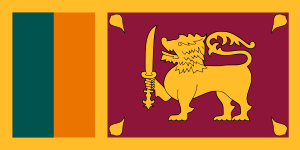


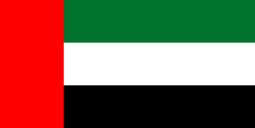

Civil operators
.svg.png)
.svg.png)

- Space Hijackers – 2007–present – Mark 1 Saracen used for publicity stunts

- Tulsa Police Department, 1; Saracen hull re-mounted on a commercial truck chassis
- Sierra Vista Police Department, 1; SWAT
- San Francisco Police Department, 1; SWAT
- Snohomish County Sheriff, 1; SWAT
Variants
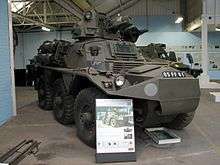
Saracens were initially equipped with an L3A4 (0.30-inch Browning) machine gun in the turret, and a Bren light machine gun for the gun-ring at the rear of the vehicle. Later Marks carried the LMG, and L37 GPMG.
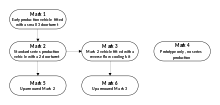
- Mk 1: Early version with a small 3-door turret and turret weapon ports.
- Mk 2: Modified Mark 1 with later two-door turret. The rear turret door folds down and can act as a seat for the commander.
- Mk 3: Reverse-flow cooling for use in hot climates.
- Mk 4: Prototype only.
- Mk 5: Mark 1 or Mark 2 vehicles modified with extra armour specifically for use in Northern Ireland.
- Mk 6: Mark 3 modified with extra armour as for the Mk 5 for use in Northern Ireland.
- Concept 3 New Generation Armoured Car: Mk 3 suspension and drive train with chassis redesigned by the South African Defence Force to accept a 77mm HV tank gun. Prototype only.[7]
In popular culture
A Saracen masquerades as a German armoured car in the 1964 film 633 Squadron, which was set during World War II, a decade before the Saracen was first built.
In the 1967 episode "Mission Highly Improbable" of the TV series The Avengers (the penultimate episode with Diana Rigg in the female leading role), the villainous Dr Matthew Chivers (played by Francis Matthews) is trying to smuggle a Saracen FV 603 out of a British Army testing area by shrinking it to toy size with the help of a machine invented by his boss Professor Rushton (played by Noel Howlett).
In the Tom Sharpe novel Riotous Assembly, a Saracen is destroyed by an elephant gun fired by Constable Els of the South African Police.
In the 1983 debut album Script for a Jester's Tear, by British progressive rock group Marillion, the Saracen was referred to in the final song: "...crawling behind a Saracen's hull from the safety of his living room chair..." The lyrics of Forgotten Sons describe the conflict in Northern Ireland and the discrepancy between what was really happening and the perception of the conflict by the British public.[10]
In the Irish rebel music song Kinky Boots (a parody of The Combine Harvester) reference is made to the Saracen in the opening line of the song.
In the 1984 Indonesian Film Pengkhianatan G30S/PKI, Saracens were used by the Indonesian Army and the Kostrad as a patrol Vehicle during the Infamous 30th September Movement Coup d'etat, Later, Saracens are also used as transport for the bodies of the six Army Generals who became victims of the coup.
Saracens were used almost unchanged in the 1995 film of Judge Dredd as carriers for prisoners and personnel carriers for Judges. 101 FCs were used as the basis for taxis, fitted with a prop bodyshell.
In the 1992 film The Crying Game, on the main characters is killed, "he were run over by a Saracen" when he attempts to escape his IRA captors.
During the 2009 G-20 demonstrations in London, members of the Space Hijackers protest group[11][12] drove their Saracen into the City of London[13] and parked it outside the Royal Bank of Scotland in Bishopsgate.[13] The Saracen, which had been painted bright blue with black and white chequered stripes, was equipped with CCTV[11] and marked "RIOT" (but not "police"). The group were reportedly there to protect the RBS building from "bad" demonstrators, although the police declined their assistance. Instead, the vehicle was searched and police questioned the protestors, who were dressed in plain blue overalls and helmets. The vehicle's eleven occupants were arrested for impersonating police officers and for traffic offences,[14][14] and were later charged with impersonating police officers, although the case was dropped before coming to court.[15][16]
A community protest, against the sale of heritage-listed Fort Largs by the state government of South Australia, took place on 25 October 2014. The protest, organised by the National Trust of SA,[17] featured an Alvis Saracen and other vintage military vehicles.
See also
References
- McClintock, Anne (April 1987). "'Azikwelwa' (We Will Not Ride): Politics and Value in Black South African Poetry". Critical Inquiry. 13 (3): 597–623. doi:10.1086/448410.
- AWM126 19 – Army vehicle registration books. 114438-122646. Canberra, Australia: Australian War Memorial.
- Jowett, Philip (2016). Modern African Wars (5): The Nigerian-Biafran War 1967–70. Oxford: Osprey Publishing Press. pp. 24–46. ISBN 978-1472816092.
- "Trade Registers". Armstrade.sipri.org. Retrieved 28 May 2015.
- Munro, Bill (2002). Alvis Saracen Family. Ramsbury, England: The Crowood Press Ltd. ISBN 1-86126-537-9.
- Guy Martin. "Nigerian Armed Forces". Retrieved 15 February 2015.
- "Lesakeng". South African Armour Museum. 6 December 2012. Archived from the original on 3 July 2013. Retrieved 18 June 2013.
- "Saracen FV 603 Wheeled armoured personnel carrier" (in French). Army Recognition. Retrieved 9 August 2011.
- https://www.scmp.com/magazines/post-magazine/article/1903597/hong-kongs-saracen-armoured-police-cars-patrol-small-town
- "Script for a Jester's Tear". Marillion Online. Archived from the original on 18 July 2011. Retrieved 9 August 2011.
- "Archived copy". Archived from the original on 4 April 2009. Retrieved 2 April 2009.CS1 maint: archived copy as title (link)
- Matthew Weaver and Haroon Siddique (1 April 2009). "G20 call for action amid protests". BBC News. guardian.co.uk. Retrieved 9 August 2011.
- BBC News video of Saracen outside RBS (no commentary) (1 April 2009)
- Weaver, Matthew (1 April 2009). "G20 summit and protests: live blog". The Guardian. London. Retrieved 23 April 2010.
- Times Online: "Black bra, red stockings: is that a fair cop?"
- The Independent: "G20 protesters to sue Met Police"
- "History buffs protest sale of Fort Largs site in Adelaide". ABC News. 25 October 2014. Retrieved 17 January 2015.
External links
| Wikimedia Commons has media related to FV 603 Saracen. |